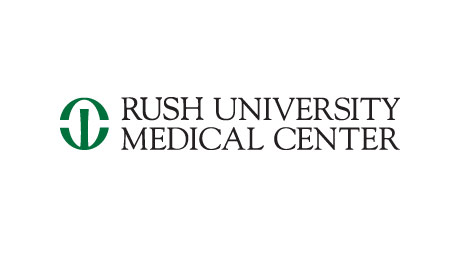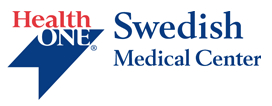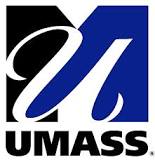Safety and Efficacy of NA-1 in Subjects Undergoing Endovascular Thrombectomy for Stroke (ESCAPE-NA1)
| Status: | Recruiting |
|---|---|
| Conditions: | Neurology |
| Therapuetic Areas: | Neurology |
| Healthy: | No |
| Age Range: | 18 - Any |
| Updated: | 5/2/2018 |
| Start Date: | March 1, 2017 |
| End Date: | April 2020 |
| Contact: | Michael Tymianski, MD PhD |
| Email: | mtymianski@nonoinc.ca |
| Phone: | 416-603-5899 |
A Multicentre, Randomized, Double-blinded, Placebo-controlled, Parallel Group, Single-dose Design to Determine the Efficacy and Safety of Intravenous NA-1 in Subjects With Acute Ischemic Stroke Undergoing Endovascular Thrombectomy
The ESCAPE-NA-1 study is designed to determine the safety and efficacy of the
neuroprotectant, NA-1, in reducing global disability in subjects with major acute ischemic
stroke (AIS) with a small established infarct core and with good collateral circulation who
are selected for endovascular revascularization.
neuroprotectant, NA-1, in reducing global disability in subjects with major acute ischemic
stroke (AIS) with a small established infarct core and with good collateral circulation who
are selected for endovascular revascularization.
Trial Objectives:
The primary objective is to determine the efficacy of the neuroprotectant, NA-1, in reducing
global disability in subjects with major acute ischemic stroke (AIS) with a small established
infarct core and with good collateral circulation selected for rapid endovascular
revascularization.
The secondary objectives are to determine the efficacy of NA-1 in:
- Reducing functional dependence
- Improving neurological outcome
- Improving activities of daily living
- Reducing mortality rate The leading safety objectives are to determine the effect of
administering a dose of 2.6 mg/kg intravenous (IV) infusion of NA-1 to subject with
acute stroke who are selected for endovascular revascularization on serious adverse
events (SAEs) and 90-day mortality.
Trial Design:
This study is a Phase 3, randomized, multicentre, blinded, placebo-controlled, parallel
group, single-dose design. Subjects harboring an acute ischemic stroke and who are selected
for endovascular revascularization in accordance with local institutional practices and who
harbor a small established infarct core and with good collateral circulation will be given a
single, 2.6 mg/kg intravenous dose of NA-1 or placebo as soon as they are deemed to have met
the enrollment criteria and started within 30 minutes of randomization. The randomization
will be by stochastic minimization to balance baseline factors.
The primary objective is to determine the efficacy of the neuroprotectant, NA-1, in reducing
global disability in subjects with major acute ischemic stroke (AIS) with a small established
infarct core and with good collateral circulation selected for rapid endovascular
revascularization.
The secondary objectives are to determine the efficacy of NA-1 in:
- Reducing functional dependence
- Improving neurological outcome
- Improving activities of daily living
- Reducing mortality rate The leading safety objectives are to determine the effect of
administering a dose of 2.6 mg/kg intravenous (IV) infusion of NA-1 to subject with
acute stroke who are selected for endovascular revascularization on serious adverse
events (SAEs) and 90-day mortality.
Trial Design:
This study is a Phase 3, randomized, multicentre, blinded, placebo-controlled, parallel
group, single-dose design. Subjects harboring an acute ischemic stroke and who are selected
for endovascular revascularization in accordance with local institutional practices and who
harbor a small established infarct core and with good collateral circulation will be given a
single, 2.6 mg/kg intravenous dose of NA-1 or placebo as soon as they are deemed to have met
the enrollment criteria and started within 30 minutes of randomization. The randomization
will be by stochastic minimization to balance baseline factors.
Inclusion Criteria:
1. Acute ischemic stroke (AIS) for immediate endovascular treatment
2. Age 18 or greater.
3. Onset (last-seen-well) time to randomization time within 12 hours.
4. Disabling stroke defined as a baseline National Institutes of Health Stroke Score
(NIHSS) > 5 at the time of randomization.
5. Pre-stroke (24 hours prior to stroke onset) independent functional status in
activities of daily living with modified Barthel Index (BI) > 90 (95 or 100). Patient
must be living in their own home, apartment or seniors lodge where no nursing care is
required.
6. Confirmed symptomatic intracranial occlusion, based on multiphase or dynamic
computerized tomographic angiography (CTA), at one or more of the following locations:
Intracranial carotid T/L, M1 middle cerebral artery (MCA). Functionally, when defining
the M1 or the M2, the bulk of the MCA territory must be ischemic.
7. Non-contrast computed tomography (NCCT) and CTA (multiphase or dynamic) for trial
eligibility performed or repeated at ESCAPE-NA1 stroke centre with endovascular suite
on-site.
8. Endovascular treatment with declared first endovascular approach as either stent
retriever or aspiration device, and intended to be initiated (arterial access) within
60 minutes of baseline/qualifying NCCT and to first recanalization of 90 minutes.
Study drug intended to be administered within 60 minutes of the baseline/qualifying
NCCT.
9. Signed informed consent from subject or legally authorized representative.
Exclusion Criteria:
1. Evidence of a large core of established infarction defined as ASPECTS 0-4.
2. Evidence of absence of collateral circulation on CTA (Collateral score of 0 or 1).
3. Intent to use any endovascular device other than a stent retriever or clot aspiration
device or intra-arterial medications as the initial thrombectomy approach.
4. Intent to use any intravenous thrombolytic other than alteplase if intravenous
thrombolysis is planned.
5. No femoral pulses, very difficult endovascular access or extreme tortuosity of great
vessels that is predicted to result in an inability to deliver timely endovascular
therapy. Direct common carotid or radial/brachial/axillary access is permissible.
6. Estimated or known weight > 120 kg or < 45 kg.
7. Pregnancy; if a woman is of childbearing potential a urine or serum beta human
chorionic gonadotropin (β-hCG) test is positive, or breastfeeding.
8. Severe contrast allergy or absolute contraindication to iodinated contrast preventing
endovascular intervention.
9. Clinical history, past imaging or clinical judgment suggests that the intracranial
occlusion is chronic or there is suspected intracranial dissection such that there is
a predicted lack of success with endovascular intervention.
10. Prior enrolment in the ESCAPE-NA1 trial or prior receipt of NA-1 for any reason.
11. Severe known renal impairment defined as requiring dialysis (hemo- or peritoneal) or
if known a creatinine clearance < 29 mL/min.
12. Patient has a severe or fatal comorbid illness that will prevent improvement or
follow-up.
13. Patient cannot complete follow-up treatment due to co-morbid non-fatal illness or they
are known to be a visitor to the city or any other known reason for which follow-up
would be impossible (e.g. incarcerated in a federal prison).
14. Participation in another clinical trial investigating a drug, medical device, or a
medical procedure in the 30 days preceding study inclusion.
We found this trial at
21
sites
Rush University Medical Center Rush University Medical Center encompasses a 664-bed hospital serving adults and...
Click here to add this to my saved trials
Rhode Island Hospital Founded in 1863, Rhode Island Hospital in Providence, RI, is a private,...
Click here to add this to my saved trials
Grady Memorial Hospital Grady is an internationally recognized teaching hospital staffed exclusively by doctors from...
Click here to add this to my saved trials
Click here to add this to my saved trials
Click here to add this to my saved trials
Click here to add this to my saved trials
Click here to add this to my saved trials
Click here to add this to my saved trials
Click here to add this to my saved trials
Saint Luke's Hospital, Kansas City Saint Luke's Hospital is a not-for-profit tertiary referral center committed...
Click here to add this to my saved trials
Click here to add this to my saved trials
Click here to add this to my saved trials
Yale-New Haven Hospital Relying on the skill and expertise of more than 4,500 university and...
Click here to add this to my saved trials
Click here to add this to my saved trials
Click here to add this to my saved trials
Click here to add this to my saved trials
Click here to add this to my saved trials
Click here to add this to my saved trials
Click here to add this to my saved trials
Univ of Massachusetts Med School As the commonwealth's only public medical school, we take seriously...
Click here to add this to my saved trials






